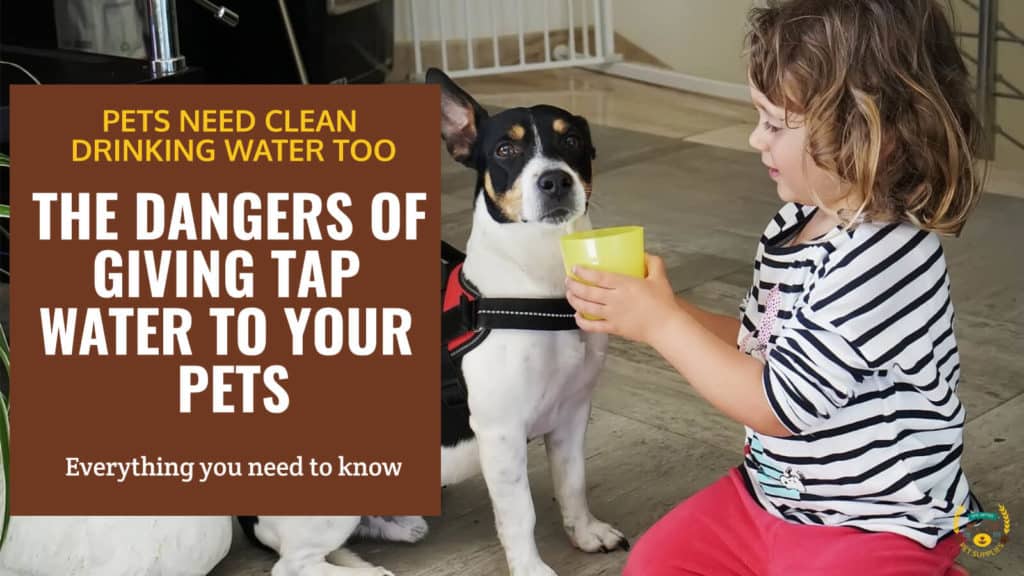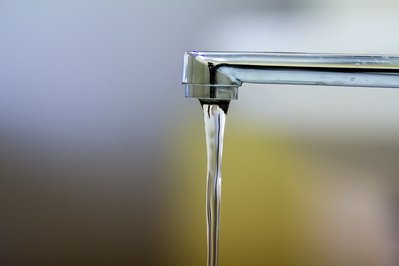The Dangers of Giving Tap Water to Your Pets
Last updated: July 15, 2022

Summary
Getting ready for your morning run, you grab a bottle of cold water out of the fridge. Maybe you fill up a reusable water bottle from a filtration device. But when it's time to fill the water dish for your pet, what do you do? If you are like many of us, you simply hold it under the tap without a second thought. It’s an innocent oversight, but if you aren’t drinking the tap water in your home, you may want to revisit giving it to your pets, too.
Contamination
Many municipalities do a really good job of water treatment. Especially since the Safe Drinking Water Act of 1974, there are standards in place that are meant to ensure everyone gets healthy drinking water. However, recent evidence suggests that some authorities across the country have not done a consistently good job of following those guidelines. According to a 2018 study at UC Irvine, violations by cities over the past 40 years have been routine and chronic, leaving between 9 and 45 million people with substandard tap water.
Some of the contaminants that can be present in improperly treated tap water can include:
- Coliform bacteria
- Viruses (like rotavirus, hepatitis, and others that cause gastroenteritis)
- Parasites like Giardia or Cryptosporidium
- Nitrates/Nitrites from fertilizer runoff
- Heavy metals (lead, mercury, arsenic)
- Trace amounts of Pharmaceuticals
- Petrochemical byproducts like MTBE
- Pesticides and herbicides
Not sure how safe your tap water is? Here’s an easy to use tool that shows municipal water contaminants by zip code.

Chlorine and Fluoride
In addition to the contamination that often makes its way into city water by mistake, all municipal water will contain Fluoride and some form of Chlorine.
Fluoridation in water goes back several decades now and is generally thought of as safe. However, some people are not convinced, especially considering that this is an under-studied area of public health. There is evidence pointing to a possible link between drinking fluoridated water and bone issues in dogs as well as people. Given the uncertainty about fluoride, it probably isn’t a good idea to be giving fluoride to your pets.
Apart from tasting awful, chlorine in drinking water probably isn’t harming people or mammalian pets. That doesn’t mean you want to drink it if you can help it. Most people go out of their way to avoid drinking chlorine because it is just unpleasant to drink. Your pets deserve no less. Better think twice before serving your dog's favorite meal with water that contains Chlorine and Fluoride.
A Special Note for Fish and Amphibians
While you could conceivably get away with giving chlorinated drinking water to mammals -- fish and amphibians are another matter. Amphibians have more permeable skin than other animals. In fact, a big part of their gas exchange (breathing) takes place through their skin. This makes them especially vulnerable to any contamination, including chlorine. Fish, for obvious reasons, are even more vulnerable to chlorine, which attacks their delicate gill tissue, creating a condition called acute gill necrosis. Neither fish nor amphibians should ever come anywhere near chlorinated water.
What Can I Do About It?
Your approach to water quality for your pets will depend on your local tap water and the individual needs of the humans in your home. It's always a good idea to have your water tested if you haven’t done so before. That way, you will know what you are up against in terms of how contaminated your water is.
Bottled Water
Buying bottled water is the most common solution to doubts people have about their tap water. After all, in the short term, it seems like the cheapest and easiest solution: just lay down a few bucks for a pack of water bottles, and the problem is solved. You even get a handy disposable container to use on the go.
Unfortunately, the reality isn’t that simple. Bottled water may seem cheaper in the short run, but over time, this is by far the most expensive solution to water quality issues. A medium-sized family with pets could easily rack up $2,000-$4,000 buying bottled water over a year, far more than any water purification system.
Bottled water can also be contaminated. In a 2018 study by the World Health Organization, 90% of bottled water samples across various popular brands contained microplastics. Paying several grand a year so that you and your pets can drink plastic may be a little too ironic.
An additional consideration for bottled water is its environmental impact. All those plastic bottles have to go somewhere. Even if you recycle, the material ultimately ends up in the landfill. You can see a detailed analysis of the impact of plastic water bottle use here.
Distilled Water
Distilled water is liable to the same problems as other bottled water, with the additional problem of being too pure. That sounds odd, but in order to be healthy, drinking water should contain a small number of dissolved solids, like calcium or magnesium ions. Without these trace elements, water becomes hypotonic.
This basically means that living cells soak in too much of it, sometimes causing problems. This is yet another consideration for amphibians and their porous skin. Spending time in distilled water interferes with their osmotic regulation and can swell them up alarmingly. Amphibians and distilled water do not mix.
Filtration
Some kind of filtration is usually the simplest and cheapest solution. Water filter choices abound. Your best fit for a water filter would depend, once again, on the results of your water test. For non-chlorinated well water that comes back with good test results, you could get away with a simple whole-house sediment filter from a home improvement store.
For more robust water purification, a gravity-fed water filter like the Big Berkey can be a great option. These filters sit on your kitchen countertop and do an excellent job removing all the contaminants listed above as well as chlorine and fluoride.
Another nice feature of filtration is that it purifies without removing beneficial minerals.
Reverse Osmosis
Reverse osmosis systems are typically installed under the kitchen counter. They work by forcing water through a semipermeable membrane in the opposite direction than it would normally go, hence, “reverse.”
These units purify water very well, removing contamination as well as the gravity-fed water filters. They also remove beneficial minerals, which can lead to some of the osmotic regulation issues with amphibians mentioned above.
Reverse osmosis can be somewhat costly as well, compared to most filtration devices, taking installation and cartridge replacement into account.
Another consideration is the discharge these units create. The system has to flush away contaminants that it filters out. It does this by washing a certain amount of water down the drain; up to three times the amount of water being filtered!
Safe, Healthy Water for Everyone
Whatever purification option you choose, it will give you great peace of mind knowing that everyone in your household, pets included, is getting the cleanest, healthiest water possible. Now, when you go out for that morning run, you can fill your bottle with a clear conscience!






